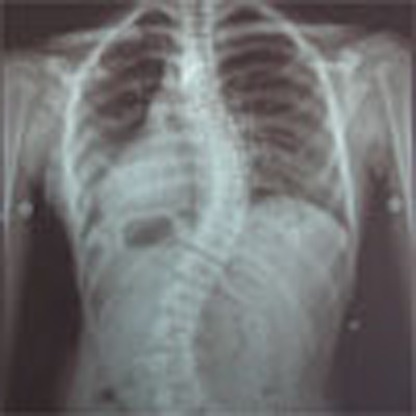- Record: found
- Abstract: found
- Article: found
Genome-wide association study identifies new susceptibility loci for adolescent idiopathic scoliosis in Chinese girls

Read this article at
Abstract
Adolescent idiopathic scoliosis (AIS) is a structural deformity of the spine affecting millions of children. As a complex disease, the genetic aetiology of AIS remains obscure. Here we report the results of a four-stage genome-wide association study (GWAS) conducted in a sample of 4,317 AIS patients and 6,016 controls. Overall, we identify three new susceptibility loci at 1p36.32 near AJAP1 (rs241215, P combined=2.95 × 10 −9), 2q36.1 between PAX3 and EPHA4 (rs13398147, P combined=7.59 × 10 −13) and 18q21.33 near BCL-2 (rs4940576, P combined=2.22 × 10 −12). In addition, we refine a previously reported region associated with AIS at 10q24.32 (rs678741, P combined=9.68 × 10 −37), which suggests LBX1AS1, encoding an antisense transcript of LBX1, might be a functional variant of AIS. This is the first GWAS investigating genetic variants associated with AIS in Chinese population, and the findings provide new insight into the multiple aetiological mechanisms of AIS.
Abstract
 The authors perform a genome-wide association study of adolescent idiopathic scoliosis
patients of Han Chinese descent, and identify 3 new loci for disease susceptibility.
The authors perform a genome-wide association study of adolescent idiopathic scoliosis
patients of Han Chinese descent, and identify 3 new loci for disease susceptibility.
Related collections
Most cited references45
- Record: found
- Abstract: found
- Article: not found
The mystery of BCL2 family: Bcl-2 proteins and apoptosis: an update.
- Record: found
- Abstract: found
- Article: not found
Genetic variants in GPR126 are associated with adolescent idiopathic scoliosis.
- Record: found
- Abstract: found
- Article: not found